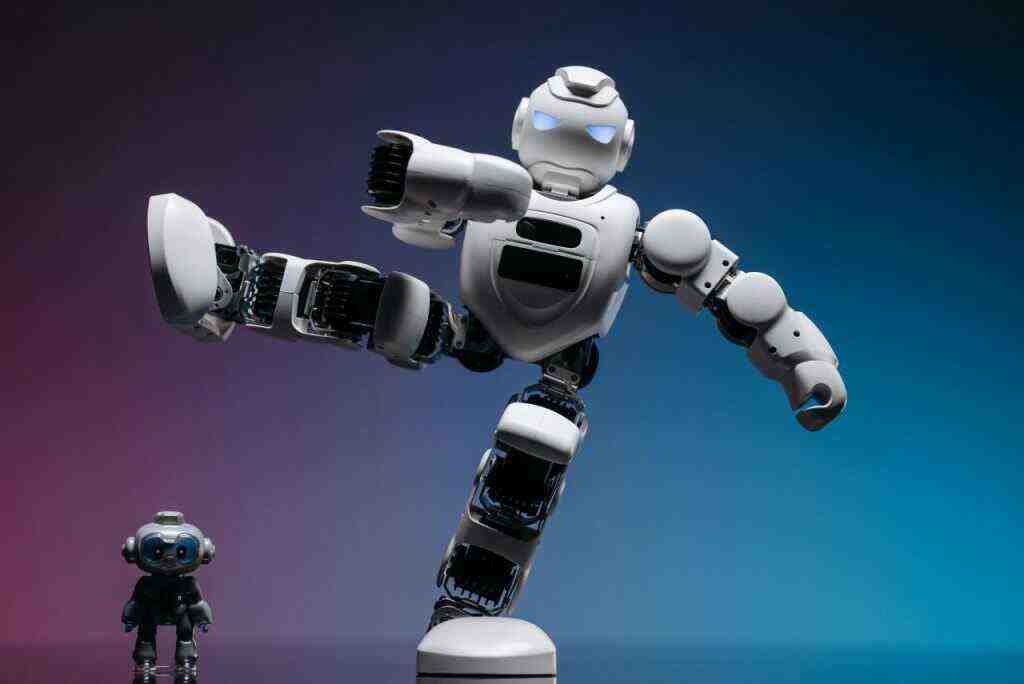Robots Take Over Fast Food Kitchens: A Comprehensive Analysis
Introduction
In the bustling world of fast food, a revolution is underway, driven by the relentless march of automation. From the whirring salad assembly lines to the robotic burger flippers, robots are rapidly transforming the landscape of fast food kitchens. This comprehensive analysis delves into the rise of robots in fast food kitchens, exploring the factors fueling this trend, the benefits and challenges associated with automation, and the potential impact on the workforce.
The Rise of Robots in Fast-Food Kitchens
The COVID-19 pandemic acted as a catalyst, exacerbating the labor shortage in the restaurant industry. Faced with staffing challenges and rising costs, fast food chains turned to automation as a viable solution. Robots, with their tireless work ethic and consistent output, became the answer to the industry’s woes.
Factors Driving Automation in Fast-Food Kitchens
Several factors have converged to propel the surge in automation in fast-food kitchens:
1. Labor Shortages:
The restaurant industry has been grappling with a severe labor shortage, with many workers seeking better opportunities elsewhere. Automation offers a way to alleviate this shortage, allowing businesses to continue operating without relying on human labor.
2. Cost Reduction:
Robots can significantly reduce labor costs, a major expense for fast food chains. By replacing human workers with robots, businesses can save on wages, benefits, and training costs. Additionally, robots can operate 24/7, maximizing productivity and minimizing downtime.
3. Consistency and Quality:
Robots excel at delivering consistent food quality. They can precisely follow recipes, ensuring that every burger, fry, or salad meets the chain’s exacting standards. This consistency enhances the customer experience and reduces the risk of errors or complaints.
4. Innovation and Efficiency:
Automation drives innovation in the fast food industry. Robots can perform tasks that are impossible or impractical for human workers, such as operating complex assembly lines or preparing food in hazardous environments. This innovation leads to increased efficiency and productivity, benefiting both businesses and customers.
Benefits and Challenges of Automation in Fast-Food Kitchens
While automation offers numerous advantages, it also presents certain challenges that need to be addressed:
Benefits of Automation:
1. Labor Cost Savings:
Automation can significantly reduce labor costs, allowing fast food chains to operate more profitably. This cost savings can be reinvested in other areas of the business, such as menu development or employee training.
2. Increased Efficiency and Productivity:
Robots can work faster and more efficiently than human workers, leading to increased productivity and shorter wait times for customers. This can improve the overall customer experience and drive sales.
3. Consistent Food Quality:
Robots ensure consistent food quality by precisely following recipes and adhering to strict standards. This consistency enhances the customer experience and reduces the risk of complaints or errors.
4. Innovation and New Technologies:
Automation fosters innovation in the fast food industry. Robots enable new technologies and processes that enhance efficiency and productivity. These innovations can lead to new products, services, and ways of doing business.
Challenges of Automation:
1. High Initial Investment:
The initial investment required to implement automation in fast-food kitchens can be substantial. The cost of robots, installation, and maintenance can be a barrier to entry for many businesses.
2. Job Displacement:
The increasing adoption of automation in fast-food kitchens raises concerns about job displacement. As robots take over tasks traditionally performed by human workers, some jobs may become obsolete. This could lead to unemployment and economic hardship for individuals working in the industry.
3. Limited Flexibility and Adaptability:
Robots are designed to perform specific tasks and may lack the flexibility and adaptability of human workers. This can be a challenge in fast-food kitchens, where employees often need to adapt to changing customer demands and handle unexpected situations.
4. Ethical and Social Concerns:
The increasing use of automation in fast-food kitchens raises ethical and social concerns. Some argue that automation could lead to a dehumanized and impersonal dining experience, while others worry about the impact on workers and the potential for job displacement.
The Future of Human Labor in Fast-Food Kitchens
The rise of robots in fast-food kitchens raises questions about the future of human labor in this sector. While automation is likely to displace some jobs, it is also expected to create new opportunities for workers.
Potential Impact on the Workforce:
1. Job Displacement:
In the short term, automation is likely to lead to job displacement as robots take over tasks traditionally performed by human workers. This could result in job losses and economic hardship for individuals working in the fast-food industry.
2. New Opportunities:
However, automation is also expected to create new opportunities for workers. As robots take over routine and repetitive tasks, human workers can focus on higher-value activities that require creativity, problem-solving skills, and customer interaction. This could lead to the creation of new jobs and the upskilling of existing workers.
3. Retraining and Reskilling:
To mitigate the impact of job displacement, governments and businesses need to invest in retraining and reskilling programs that can help workers adapt to the changing demands of the labor market. This will enable them to acquire the skills necessary to succeed in new and emerging roles in the fast-food industry or other sectors.
Conclusion
The rise of robots in fast-food kitchens is a significant trend that is transforming the industry. Automation offers several benefits, including labor cost savings, increased efficiency, and consistent food quality. However, it also presents challenges, such as high initial investment, job displacement, and ethical concerns. To address these challenges and ensure that automation benefits all stakeholders, it is essential for governments, businesses, and educational institutions to work together to create a sustainable and inclusive future for the fast-food industry. By investing in retraining and reskilling programs, promoting innovation and adaptability, and addressing ethical concerns, we can harness the potential of automation to create a more prosperous and equitable future for workers and businesses alike.
